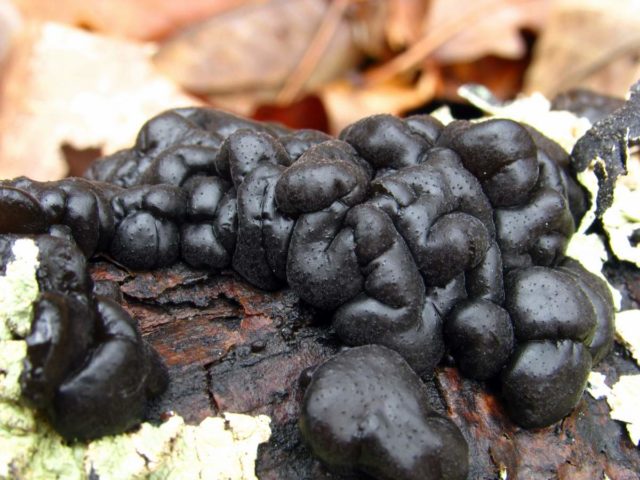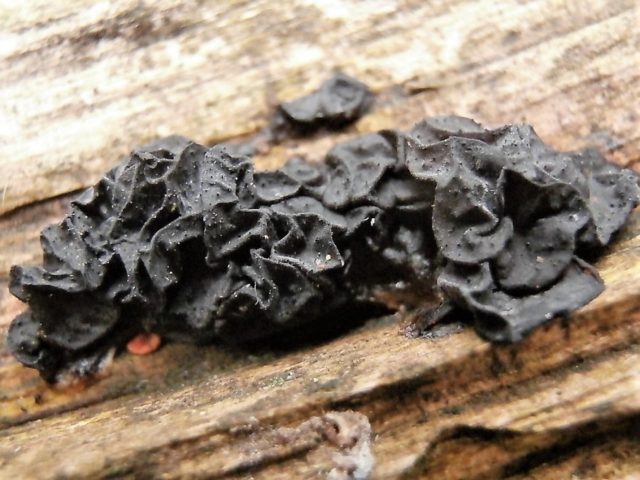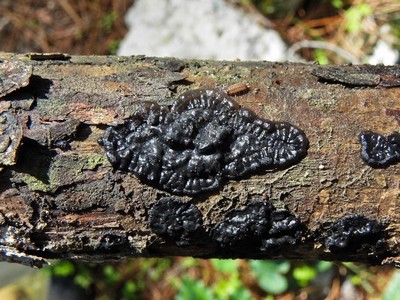Content
Exidia glandular is the most unusual mushroom. It was called "oil of witches". A rare mushroom picker will pay attention to him. The mushroom is similar to black marmalade. Grows on fallen tree branches. It is considered a biologically active food supplement.
What does exidium glandular look like?
The description of the glandular exsidia must begin with the fruiting body. It is not high, reaches a height of 1-2 cm. Outside, it is black. Inside is a transparent or olive brown jelly-like substance. The young mushroom has a teardrop shape. Having grown, it acquires a fruiting body, similar to the structure of the human brain: tuberous and ear-shaped.
When dry, the color becomes dull. The body hardens to form a dense crust. With increasing humidity, it returns to its original state. By consistency - soft density, similar to swollen gelatin or marmalade. Adult plants form a continuous colony, growing together into a single whole. Odorless. The taste is weak. Other structural features:
- The fruits of the mushroom are white, curved, cylindrical in shape. Disputes are produced all year round (in winter - during warming).
- The hypha (mushroom web) is branched and equipped with buckles.
- The reproductive organs (basidia) are in the form of a ball or egg and form 4 spores each.
Edibility of glandular exidia
Exidia glandularis belongs to a variety of inedible mushrooms. Not considered poisonous. Those who have tried it report that this species has a characteristic glandular consistency, there is no pronounced taste.
Where and how it grows
Can be found on the trunks and branches of felled birches, oaks and aspens. The distribution area of ferruginous exsidia is the entire middle forested strip of Eurasia. It grows tightly to the bark, but it is good to cut it off with a knife. It grows both as single specimens and in large colonies, covering all decaying host tree. Deep autumn or early spring is the time for the appearance of the fungus.
Doubles and their differences
Very similar to this mushroom are:
- Exidia truncated (Exidia truncata). It has a well-defined flat black cap, which is attached to the substrate sideways. Not consumed.
- Exidia blackening (Exidia nigricans). It has a more wrinkled surface than a glandular one. Appears in the second half of spring on conifers. Inedible.
- Exidia spruce (Exidia pithya). The fruiting body is thinner, like a pillow. Ends with a ribbed-wavy ridge. It is not considered as a food product. Grows on coniferous trees.
Conclusion
Exidia glandularis is considered an inedible mushroom. All varieties of this species are not used for human consumption, as they have no nutritional value and, if used improperly, can cause harm to the body.












